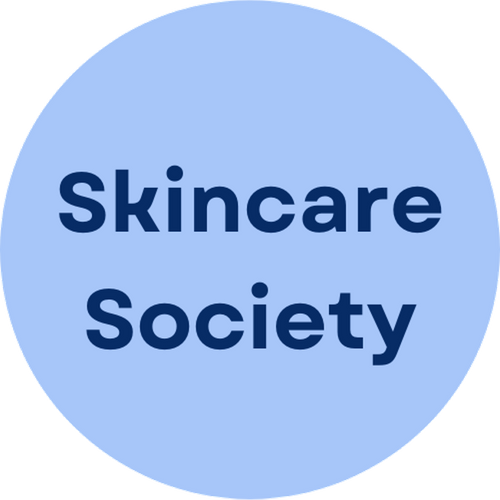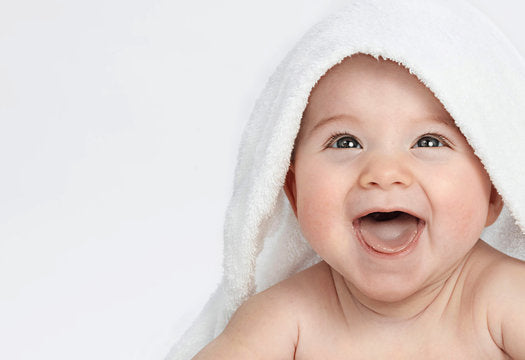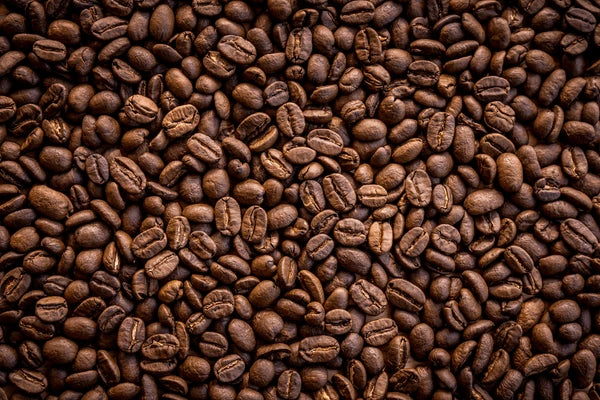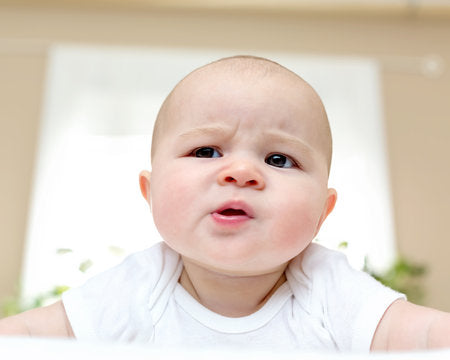Let's talk about something we all adore: babies. Aren't they just the cutest?
Their skin is just the softest, most precious thing ever. But, oh boy, can it be a challenge sometimes.
From those adorable chubby cheeks to tiny toes, baby skin loves to keep us on our toes too.
In today's blog, we're going to dive into the wonderful (and occasionally worrisome) world of baby skin conditions. Because, let's face it, even the tiniest humans can have some pretty big skin issues.
Cradle Cap
Cradle cap, or seborrheic dermatitis, is super common in new-borns and infants. It actually affects about 50% of babies.
You might spot thick, yellow or brown scaly patches on your baby's scalp that look a bit like dandruff.
While it usually shows up on the scalp, cradle cap can also appear on the eyebrows, eyelids, ears, or behind the ears. It can seem a bit alarming, but don't worry—cradle cap isn’t contagious and is typically harmless.

Symptoms
Here’s what to look out for with cradle cap:
- Scaly and crusty patches on the scalp that look greasy, sometimes covering just a small area or the entire scalp.
- The skin might appear flaky and white, kind of like dandruff.
- You might notice slight redness around the affected patches.
- The patches can be itchy, though this usually bothers older babies and children more than young babies.
What Causes Cradle Cap?
The exact causes of cradle cap aren't fully understood, but several factors are thought to play a role:
Overactive Sebaceous Glands
One of the most accepted theories is that cradle cap is caused by overactive sebaceous glands in a baby’s skin.
These glands produce an oily substance called sebum, which lubricates the skin and hair. Because babies are born quite immature, their sebaceous glands may be overactive, producing too much sebum.
This excess sebum can build up and lead to greasy scales on the scalp.
Hormonal Causes
During pregnancy, a mother’s hormones are constantly passed to the baby. These hormones can stimulate the baby’s sebaceous glands, contributing to the build-up of sebum and the development of cradle cap.
Fungal Causes
Malassezia is a yeast naturally present on the skin and usually harmless. However, in some babies, Malassezia can overgrow due to their immature immune system and hormonal fluctuations, leading to an imbalance in the skin. This imbalance is thought to contribute to cradle cap.
Bacterial Causes
Though less common, bacteria can also play a role in cradle cap. If bacteria like Staphylococcus and Streptococcus overgrow, they can cause inflammation and irritation, leading to increased scaling and flaking of the scalp.
Genetic Factors
Genetics may also be involved. Studies have shown that if parents had cradle cap as babies, their child is more likely to develop it too. However, genetics are not the sole contributor—hormonal, sebaceous gland activity, and environmental factors also play a role.
Environmental Factors
Environmental factors can trigger or worsen cradle cap in susceptible babies. Insufficient skincare can contribute, so it’s important to wash your baby’s scalp regularly to reduce the build-up of oils, dead skin, and products that can encourage bacterial growth. Also, cold weather and dry air can dry out the scalp, leading to flaking and scaling.

How Tallow Can Help Your Baby
The reason I listed those causes is because they enable us to see how tallow is actually a super-ingredient when it comes to soothing our baby's soft skin.
Babies have very sensitive skin which means they are more sensitive to harsh ingredients than adults are…
And to be honest, when researching for this blog, I could not find ANY good solutions for Cradle Cap and I was worried... then I started looking into tallow + natural oils and the results we're pretty obvious.
I read a LOT of stories from mums who tried tallow and said it worked wonders...
Anecdotes alone are not usually enough to draw conclusions so I checked out the science.
Overactive Sebaceous Glands - Sorted
Remember how I mentioned sebum earlier? Guess what...
"Sebum" actually means "tallow" in Latin and began to be used in this biological sense around the year 1700.
Weird right?
Well, not really.
That's because tallow actually matches our skin's natural oils. It nourishes the skin and helps to normalize the sebum production.
Take this quote from a cool article I found, "Using beef tallow on bare skin mimics natural oil production, which can help to lock in moisture and strengthen the skin barrier while discouraging overactive sebum glands"
Read that last part again... "discourages overactive sebum glands..." and overactive sebum glands are one of our potential causes so…
You see what I'm getting at here?!
It doesn't end there though, jojoba oil, the second key ingredient in our baby balm, "regulates sebum production because it's so similar to the sebum that your body produces naturally".
So, it looks like we've solved that overactive sebum.
Turns out tallow and jojoba are basically sebum-regulating experts…
Antibacterial Fix
Unfortunately, there isn't much we can do about the potential hormonal causes, fungal causes or genetic factor…
I'm afraid no skincare cream is going to change your babies hormones or their genes.
At least I hope not😂
But we can have a closer look at the bacterial cause…
Tallow is prized for it's vitamins and moisture content but did you know it has antimicrobial and antibacterial properties as well?
Pretty impressive if you ask me.

Other Ways To Treat Cradle Cap
If your baby does develop cradle cap, don't stress.
Here are some easy and effective treatments to help reduce Cradle Cap
- Use a Gentle Cleansing Shampoo: This can help reduce the build-up of excessive oils without disturbing the natural balance of the scalp. Be careful not to over-wash, as this can cause irritation and worsen dryness. Make sure to opt for a natural shampoo.
- Gently Brush the Scalp: Gently brushing your baby's scalp can help lift and remove the scales of cradle cap without causing discomfort.
- Breastmilk: Breastmilk has antibacterial properties and essential nutrients that can help remove cradle cap. Apply breastmilk to your baby’s scalp to help loosen the scales before gently brushing them off.
- Dry the Scalp After Bathing: After bathing your baby, make sure to dry their scalp to prevent moisture build-up.
Using tallow and jojoba oil to address the sebum and bacterial issue is great, but combine this with the right environment and you are right on track to fixing that nasty cradle cap.
Besides the benefits mentioned above, tallow is a powerhouse of nutrients that can transform you or your babies skin. Rich in omega-3 fatty acids, it works wonders for strengthening the skin barrier and calming inflammation.
Jojoba Oil To The Rescue
While tallow is awesome, it's important not to overlook another one of Mother Natures miracle ingredients: jojoba oil, especially when it comes to treating cradle cap.
Why? Because Jojoba oil is a natural emollient. Emollients are oil-rich substances that treat dry, flaky skin, leaving it smooth and soft.
Try applying a natural oil like jojoba oil, coconut oil, or olive oil to your baby’s scalp before bathing. This can help loosen the scales, making them easier to remove.

Tallow & Jojoba - The Solution?
It's almost like tallow and jojoba we're MADE for this job.
They are arguably two of the MOST EFFECTIVE natural ingredients when it comes to treating Cradle Cap...
That's why we decided to put them together in our new baby balm.
Our 'Baby Balm', launching within a week or so is designed with sensitive baby skin specifically in mind.
I'm not going to shamelessly plug our new product here as I like to keep these blogs informative, but I will stress that it's important to consider what is going onto your baby's skin, especially when their skin is so sensitive.
Stay tuned for Part 2 of this blog where I'll be covering the treatment of nappy rash next week.
Talk soon




Excited to try this